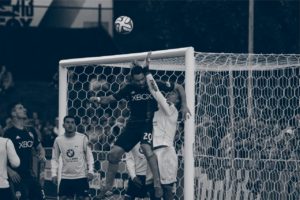1. Cam morphology is associated with MRI-defined cartilage defects and labral tears: a case-control study of 237 young adult football players with and without hip and groin pain
Heerey J et al
La Trobe University, Bundoora, Victoria, Australia
BMJ Open Sport Exerc Med. 2021 Dec 15;7(4):e001199. doi: 10.1136/bmjsem-2021-001199
In this case-control study on 182 (288 hips) symptomatic (hip and/or groin pain >6 months and positive flexion-adduction-internal-rotation (FADIR) test) and 55 (110 hips) pain-free young football players (soccer or Australian football), femoral head cam morphology size defined using radiographic alpha angle was associated with MRI-defined cartilage defects and labral tears both in symptomatic and asymptomatic players, suggesting that cam morphology may contribute to the high prevalence of hip OA in football players.
2. Quadriceps and Hamstrings Strength Reference Values for Athletes With and Without Anterior Cruciate Ligament Reconstruction Who Play Popular Pivoting Sports, Including Soccer, Basketball, and Handball: A Scoping Review
van Melick N, van der Weegen W, van der Horst N
Sports and Orthopedics Research Centre, St. Anna Hospital, Geldrop, the Netherlands
J Orthop Sports Phys Ther. 2021 Dec 31:1-35. doi: 10.2519/jospt.2022.10693
This scoping review of 42 studies in PubMed, the Cochrane Library, MEDLINE, Embase and Web of Science until January 26, 2021, reports reference values for quadriceps and hamstring isokinetic and isometric strength tests in healthy athletes who play pivoting sports and athletes with anterior cruciate ligament reconstruction (ACLR) who play pivoting sports, including soccer, basketball and handball.
3. Individual-based Creatine Kinase Reference Values in Response to Soccer Match-play
Ribeiro J, Gantois P, Moreira V, Miranda F, Romano N, Nakamura FY
University of Maia, ISMAI, Portugal
Int J Sports Med. 2022 Jan 9. doi: 10.1055/a-1678-7340
In this study, the creatine kinase blood concentration was analyzed 36-43 hours following to 70 official matches in 25 professional soccer players throughout a 3-year period. Individual absolute reference limits were calculated at 97.5th percentile of the samples collected, allowing for determining whether the creatine kinase response is typical or if it is higher than normal and could be used as a practical guide for detection of muscle overload, following professional soccer match-play.





